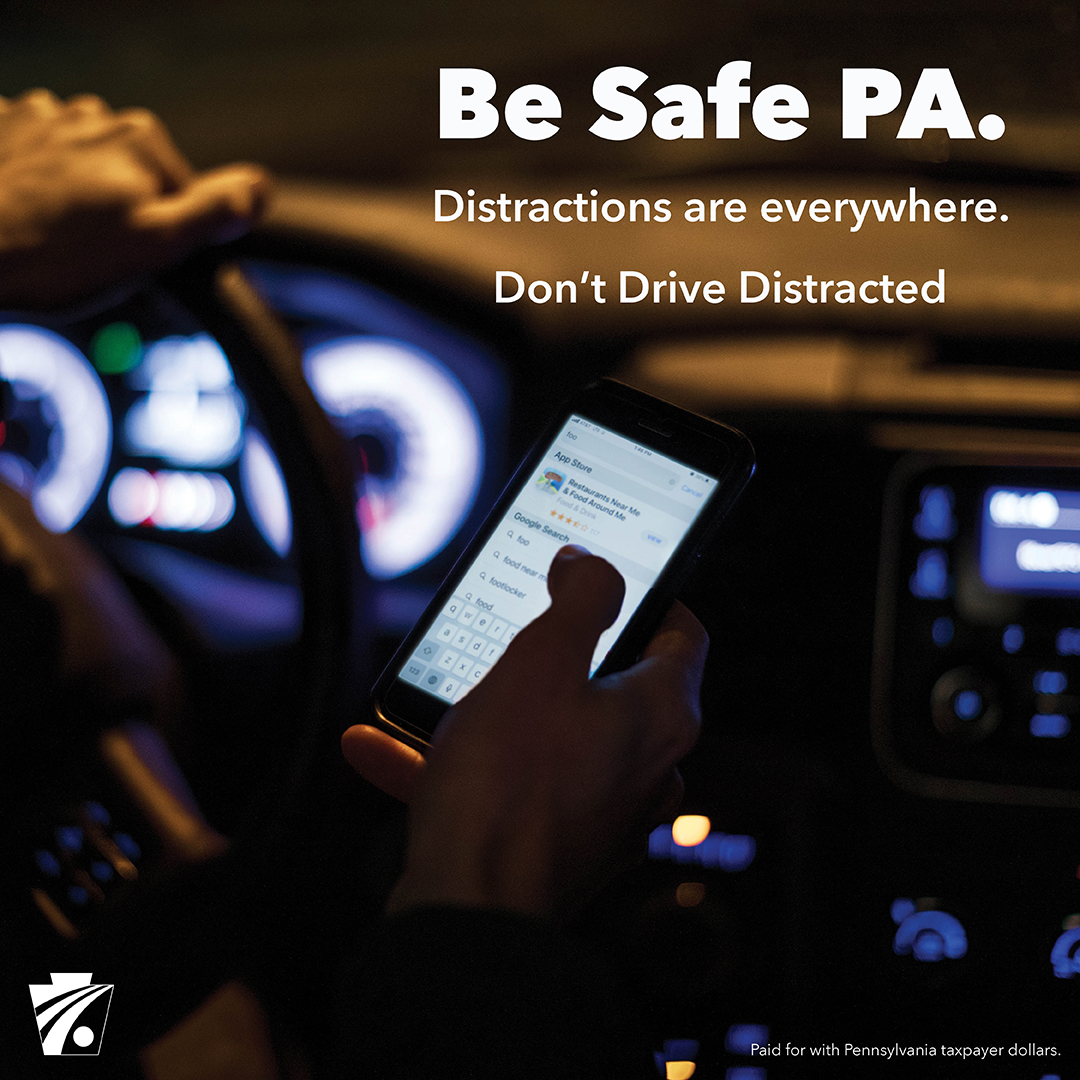Distracted Driving

Anything that causes you to either take your attention away from driving, take your eyes off of the road or take your hands off of the wheel is a distraction.
Pennsylvania's Texting-While-Driving Ban
The law prohibits as a primary offense any driver from using an Interactive Wireless Communication Device (IWCD) to send, read or write a text-based communication while his or her vehicle is in motion.
- Defines an IWCD as a wireless phone, personal digital assistant, smartphone, portable or mobile computer or similar devices that can be used for texting, instant messaging, emailing or browsing the Internet.
- Defines a text-based communication as a text message, instant message, email or other written communication composed or received on an IWCD.
- Institutes a $50 fine for convictions under this section.
- Makes clear that this law supersedes and preempts any local ordinances restricting the use of interactive wireless devices by drivers.
The penalty is a summary offense with a $50 fine, plus court costs and other fees.
The violation carries no points as a penalty and will not be recorded on the driver record for non-commercial drivers. It will be recorded on commercial drivers' records as a non-sanction violation.
The texting ban does NOT include the use of a GPS device, a system or device that is physically or electronically integrated into the vehicle, or a communications device that is affixed to a mass transit vehicle, bus or school bus. The law does not authorize the seizure of an IWCD.
You will not be able to react as quickly if you are:
- Eating, drinking and smoking. These all create safety problems because they often require you to take your hands off of the wheel and take your eyes off of the road. Drivers who eat or drink while driving have trouble controlling their vehicle, staying in their lane and have to brake more often.
- Adjusting the radio, cassette or CD player.
- Talking, texting or emailing on a cellphone or smartphone.
- Interacting with other passengers. This is particularly a problem from novice or teenage drivers. If you are a teen driver with other teens as passengers, statistics show you are more likely to have a crash than if you are driving alone or are driving with adult passengers.
- Searching for or moving an object in the vehicle.
- Reading or writing.
- Personal grooming (combing hair, applying makeup).
- Rubbernecking when passing a crash scene or a work zone.
- Looking at people, objects or events happening off of the roadway.
"Faces of Distracted Driving" is an online photo series exploring the tragic consequences of texting and cell phone use behind the wheel by sharing the stories of people from across the country who have been injured or lost loved ones in distracted driving crashes.
Click here to view "Faces of Distracted Driving".
More information on distracted driving is available on the National Highway Traffic Safety Administration's
distracted driving website.